User Manual

BT-MSOII
Manual
Revision 1.2 – 2016/10/25
CONFIDENTIAL INFORMATION
Everint Co., Ltd..

2
List of Contents
1. General .......................................................................................................... 3
1.1 Overview ................................................................................................................................. 3
1.2 Features ................................................................................................................................... 4
1.3 Application .............................................................................................................................. 4
1.4 Pin Configuration ..................................................................................................................... 5
1.5 Device Terminal Functions ....................................................................................................... 6
1.6 Package Dimensions & Land Pattern ........................................................................................ 7
2. Characteristics ............................................................................................... 9
2.1 Electrical Characteristics .......................................................................................................... 9
2.2 RF Characteristics ................................................................................................................... 10
2.3 Antenna Characteristics ......................................................................................................... 11
3. Terminal Description ................................................................................... 12
3.1 UART Interface ....................................................................................................................... 12
3.2 SPI Interface (Debug only) ...................................................................................................... 12
3.3 I2C Interface .......................................................................................................................... 12
4. Reset, RST# .................................................................................................. 13
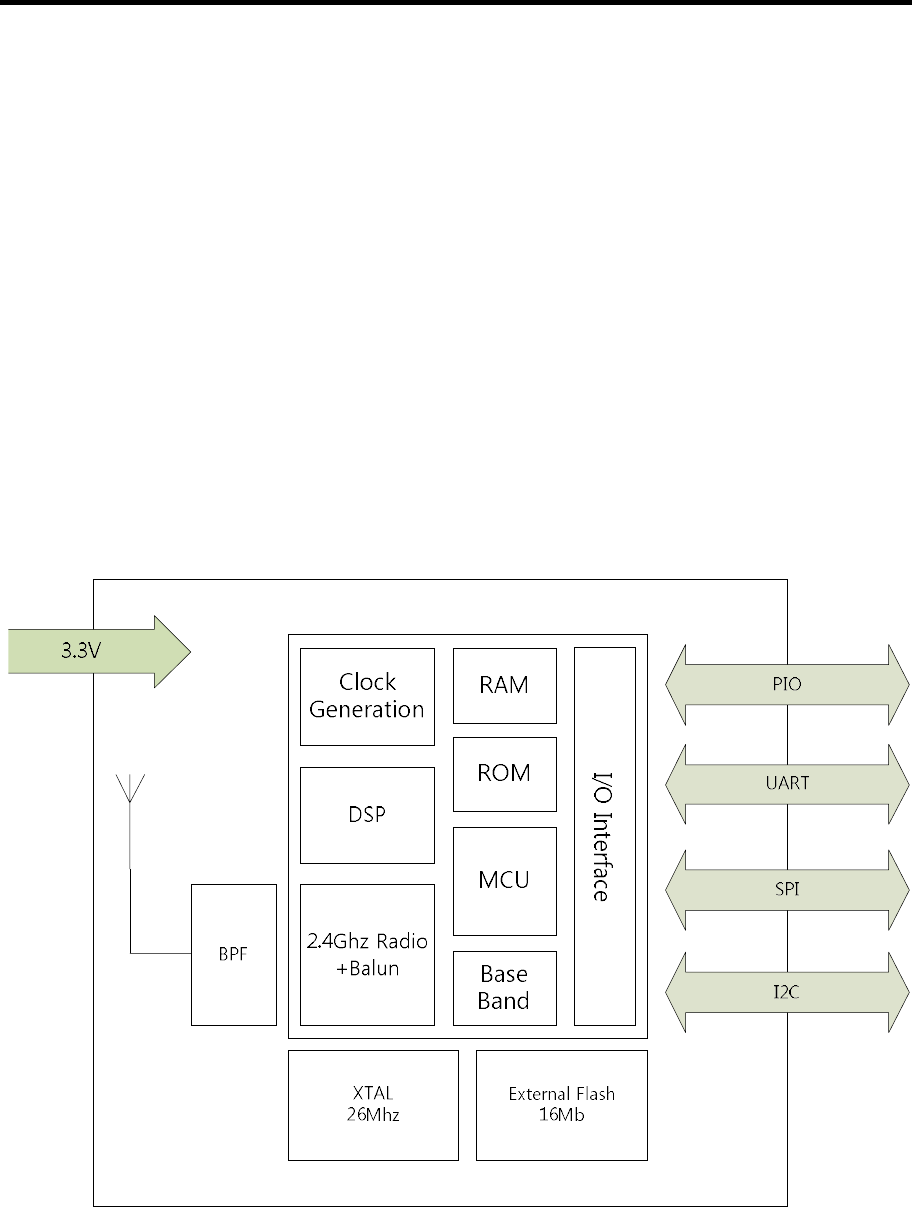
3
1. General
1.1 Overview
This specification covers Bluetooth module which complies with Bluetooth specification
version 4.1 and integrates RF & Baseband controller in small package. This Module has
deployed CSR’s CSRB5341 chipset.
All detailed specification including pin outs and electrical specification may be changed
without notice.

4
1.2 Features
■ Bluetooth® v4.1 specification compliant
■ Radio includes integrated balun and typical RF
performance of 6 dBm transmit power and -87 dBm
receive sensitivity
■ 80 MHz RISC MCU
■ Programmable DSP with 4K x 32-bit program
■ Serial interfaces: UART , I²C and SPI (debug only)
■ 4 general purpose PIOs.
■ Integrated to 16Mbit external Flash memory
■ Power‑on‑reset detects low supply voltage
■ Competitive Size
BT-MSOII : 28mm x 18mm x 2.8mm : 44Pin
■ Operating temperature range (MAX -20℃ ~ 70℃)
1.3 Application
■ Mobile Printer
■ POS system
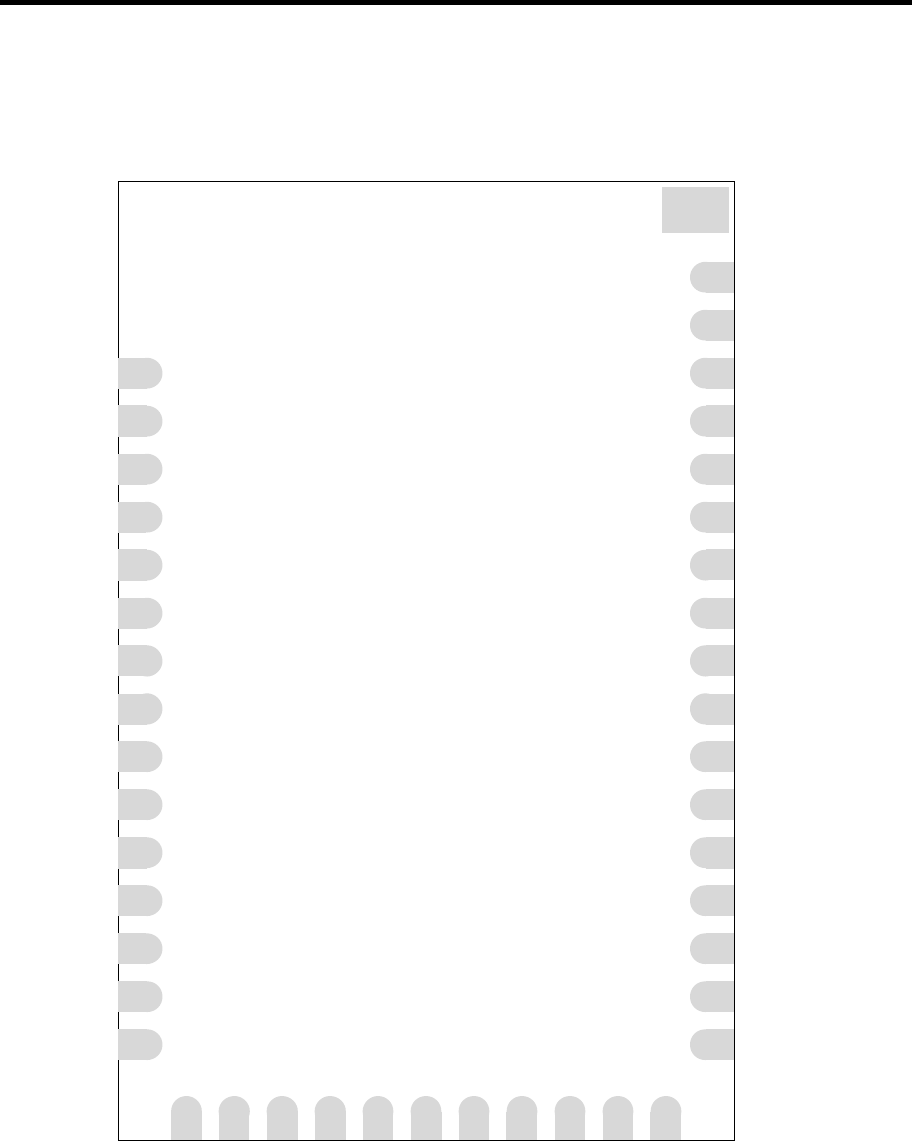
5
1.4 Pin Configuration
16 17 18 19 20 21 22 23 24 25 26
44
1
2
3
4
5
6
7
8
9
10
11
12
13
14
15
43
42
41
40
39
38
37
36
35
34
33
32
31
30
29
28
27
GND
GND
GND
GND
NC
nRESET
BT_STATUS
NC
NC
NC
3.3V
3.3V
GND
GND
GND
NC
TXD
nCTS
RXD
NC
NC
RTS_CTL
AT_CMD
NC
BT_DUT
NC
NC
GND
GND
NC
NC
GND
DEBUG_SPI_CS#
DEBUG_SPI_MISO
GND
DEBUG_SPI_SEL
DEBUG_SPI_MOSI
DEBUG_SPI_CLK
APPLE_SDA
APPLE_SCL
GND
GND
GND
NC
Pin Configuration (TOP VIEW)
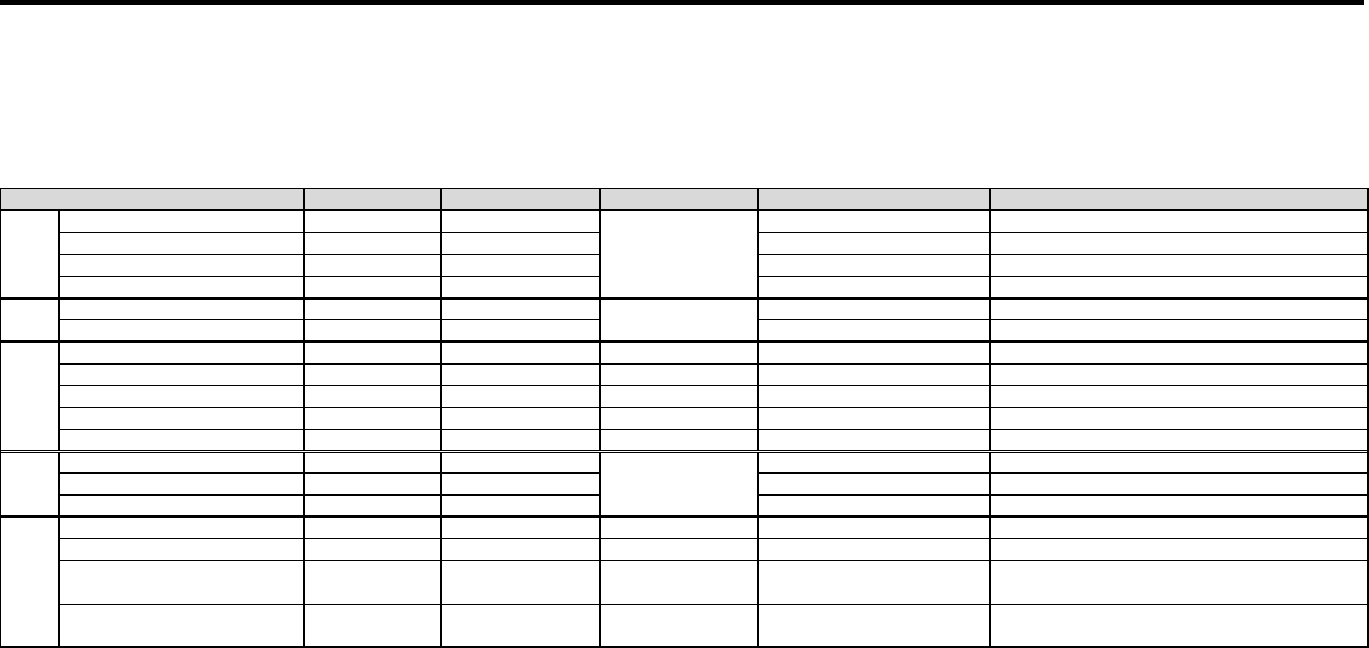
6
1.5 Device Terminal Functions
Pin Name Pin No. Pin type Description Note
BT_DUT 25 BT DUT
BT_STATUS 7 BT_STATUS
AT_CMD 23 AT Command
RTS_CTL 22 RTS Control
APPLE_SDA 29 Apple MFi Chip Interface Data
APPLE_SCL 28 Apple MFi Chip Interface Clock
DEBUG_SPI_MISO 35 Output, Weak Pull Down SPI Data Output
DEBUG_SPI_MOSI 32 Input, Weak Pull Down SPI Data Input
DEBUG_SPI_CS# 36 Input, Weak Pull Down Chip Select Active Low
DEBUG_SPI_CLK 31 Input, Weak Pull Down SPI Clock
DEBUG_SPI_SEL 33 Input, Pull Up SPI Select
RXD 19 UART Data Input
TXD 17 UART Data Output
nCTS 18 UART Clear to Send Active Low
3V3 11,12 Positive Power Supply
nRESET 6 Input, Stong Pull Up Reset
Bideirection,
Weak Pull Down
NC NC Not Connect
UART_RX
Function
3V3
RESET
PIO
PIO[13]
PIO[14]
PIO[15]
5,8,9,10,16,20,21,24,26,30
38,39,42
Other
Pins
PIO[16]
Bideirection,
Weak Pull Up
Bidirection
Weak Pull Down
SPI
Interface
UART
Interface
I2C
Interface
SPI_CS#
SPI_CLK
SPI_MISO
SPI_MOSI
SDA
SCL
SPI_SEL
GroundGND 1,2,3,4,13,14,15,27,34,37
40,41,43,44
UART_TX
UART_CTS
GROUND
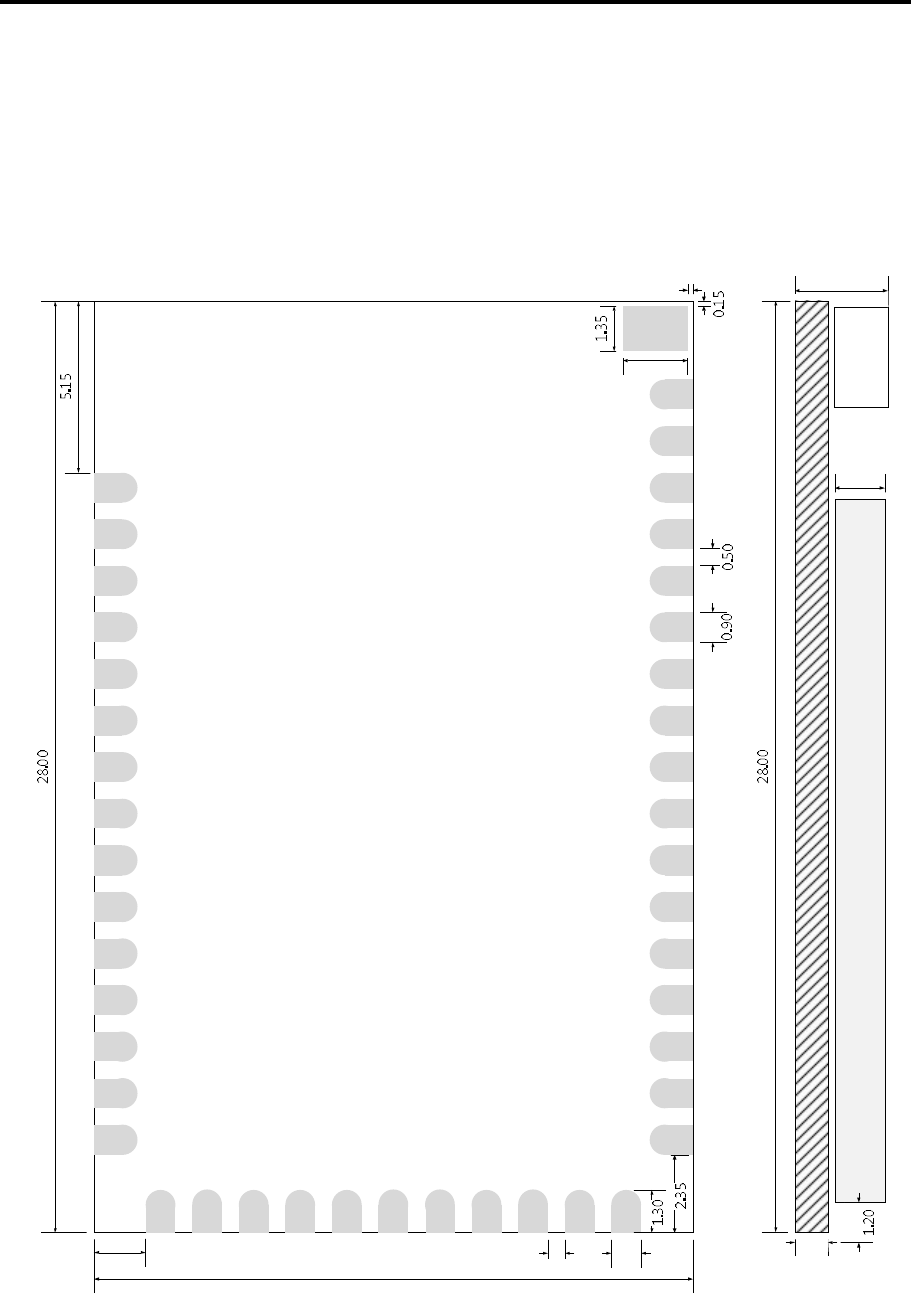
7
1.6 Package Dimensions & Land Pattern
● unit = mm
● General Tolerances = ±0.2mm
BT-MSOII Dimensions
18.00
1.95
1.00
1.50
0.900.50
1.55
0
.
15
2.80
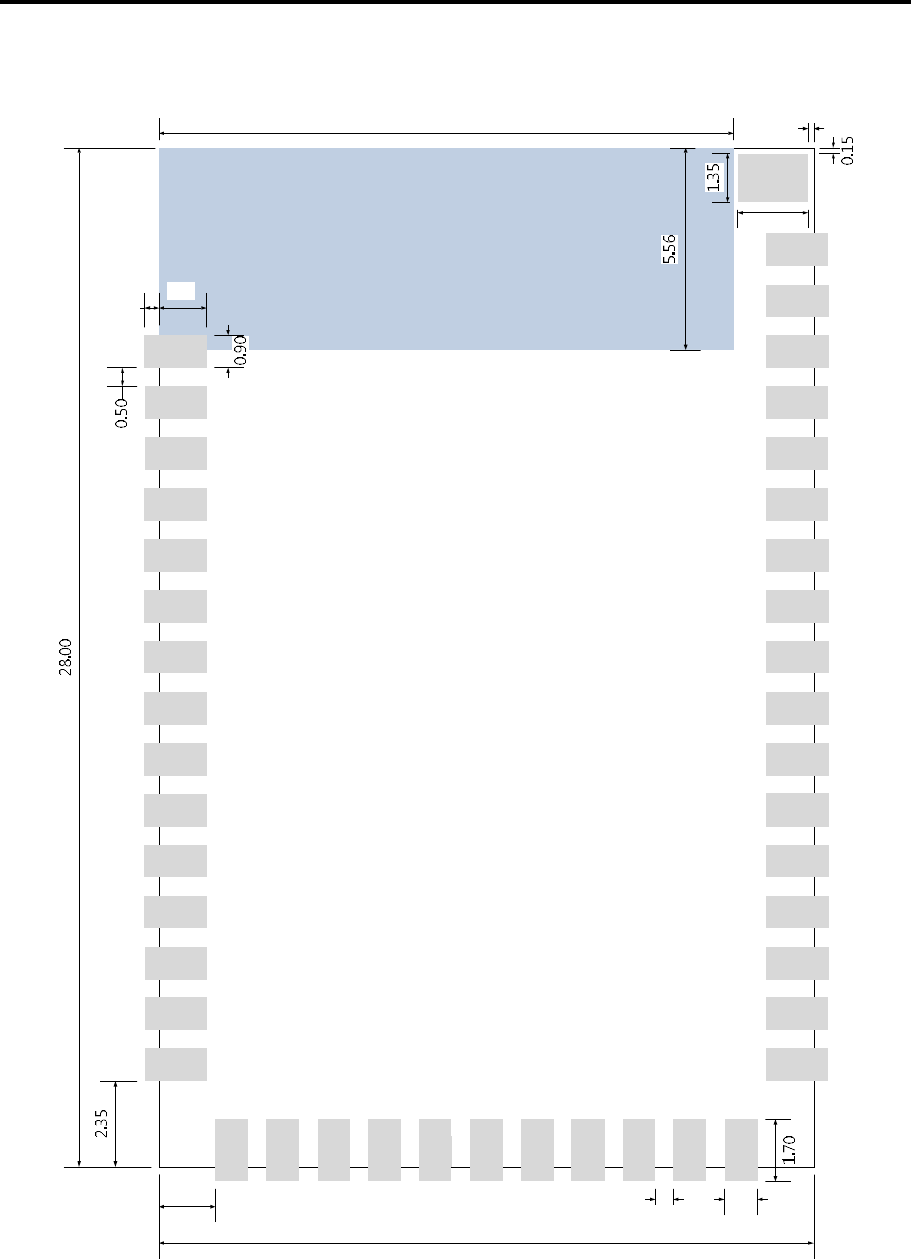
8
0.40
18.00
ANTENNA AREA
1.55
1.95
15.80
1.30
0.50 0.90
0
.
15
Land Pattern
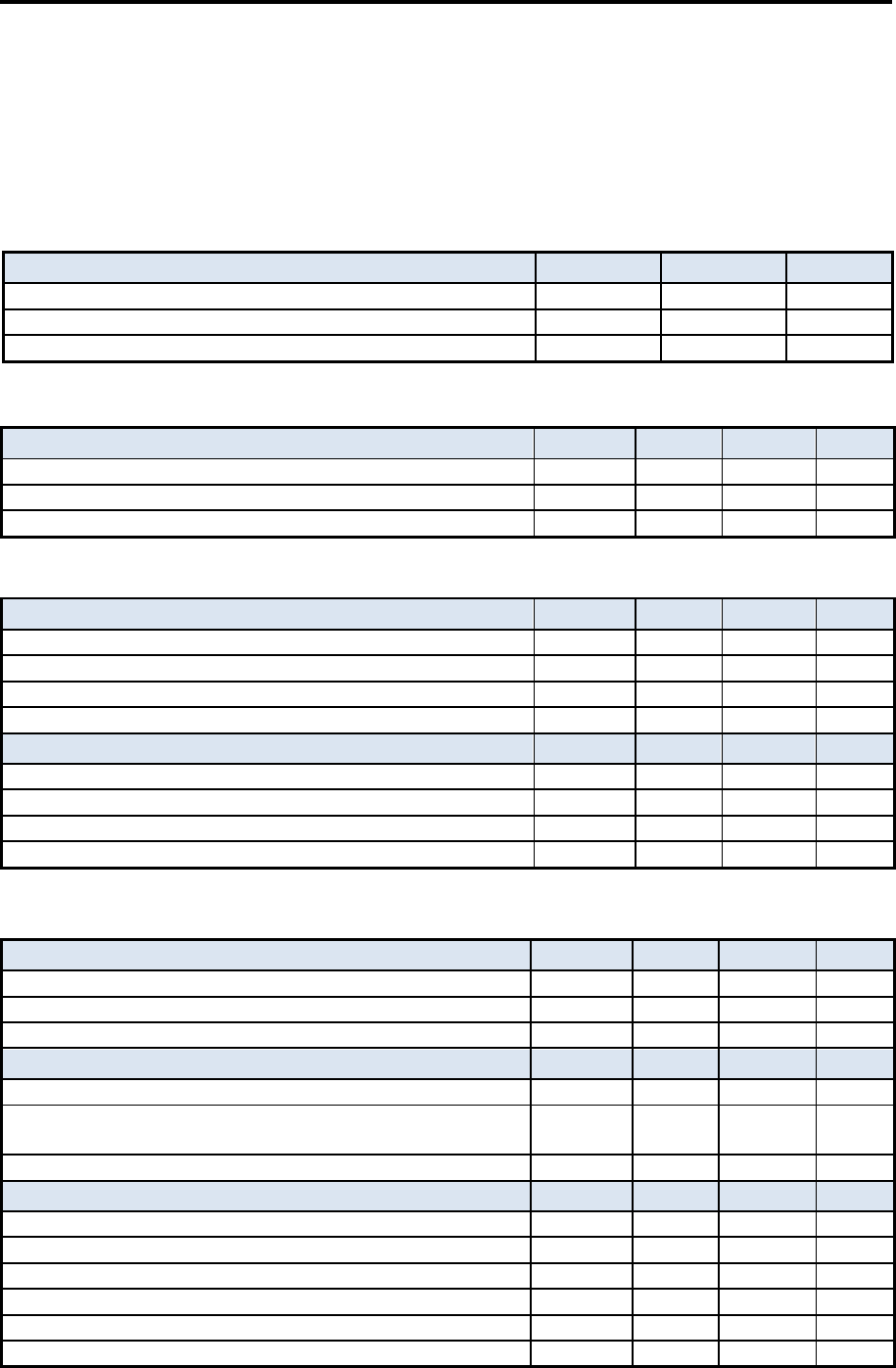
9
2. Characteristics
2.1 Electrical Characteristics
■ Absolute Maximum Ratings
Rating Min Max Unit
Storage Temperature range
-
40
85
°C
VDD
-
0.4
3.6
V
Other terminal voltages
VSS
-
0.4
VDD+0.4
V
■ Recommended Operating Conditions
Operating Condition Min Typ Max Unit
Operating Temperature range
-
20
20
70
°C
VDD
2.5
3.3
3.6
V
Other terminal voltage
2.5
3.3
3.6
V
■ Current consumption
Classic (Test Condition : VDD =3.3V, Temp = 25°C, Sniff = 40ms)
Typ Peak Unit
Standby current
-
5
-
mA
Connected current
-
4
-
mA
TX current with UART
-
9
23
mA
RX
current with UART
-
9
19
mA
BLE (Test Condition : VDD =3.3V, Temp = 25°C, Sniff = 16.25ms)
Typ Peak Unit
Standby current
-
6
-
mA
Connected current
-
4
-
mA
TX current with UART
-
7
27
mA
RX
current with UART
-
4
20
mA
UART baud rate = 230,400bps
■ Digital Terminals
Input Voltage Levels Min Typ Max Unit
V
IL
input logic level low
-
0.4
-
0.25xVDD
V
V
IH
input logic level high
0.7 x
VDD
-
VDD+0.4
V
T
r
/T
f
-
-
25
ns
Output Voltage Levels Min Typ Max Unit
V
OL
output logic level low, l
OL
= 4.0mA
-
-
0.4
V
VOH output logic level high, lOH = -4.0mA
0.75 x
VDD - - V
T
r
/T
f
-
-
5
ns
Input and Tristate Currents Min Typ Max Unit
Strong pull
-
up
-
150
-
40
-
10
μA
Strong pull
-
down
10
40
150
μA
Weak pull
-
up
-
5
-
1
.0
-
0.33
μA
Weak pull
-
down
0.33
1
5
μA
C
I
Input Capacitance
1
-
5
pF
High impedance state (no pulls)
-
0.1
0
0.1
μA
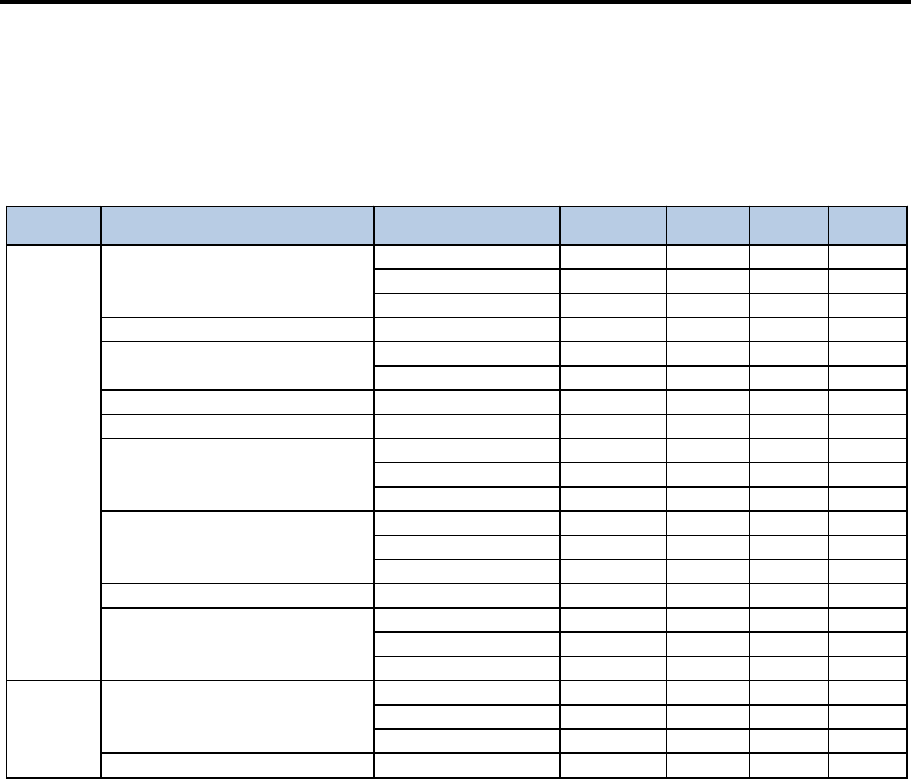
10
2.2 RF Characteristics
RF Specification Condition Min Typ Max Unit
2.402 - 4.69 - dB
2.441 - 4.96 - dB
2.480 - 5.15 - dB
Transmit power density - -6.29 - dBm
Pmin -25.79 - - dBm
Pst 3.88 4.81 - dB
Frequency Range 2401.515 - 2480.485 Mhz
20dB bandwidth for modulation - 925 - Khz
±2MHz - -22.4 - dBm
±3MHz - -48.09 - dBm
±4Mhz - -48.79 - dBm
Δf1avg - 165 - Khz
Δf2_pass_rate - 100 - %
Δf2avg/Δf1avg - 0.93 -
Intial carrier frequency tolerance df0_avg - -13.7 - Khz
One slot packet(DH1) - -4.7 - KHz
Three slot packet(DH3) - -6.4 - KHz
Five slot packet(DH5) - -6.4 - KHz
2.402 -84.6 - dBm
2.441 - -86.9 - dBm
2.480 -86.9 - dBm
Maximum input level -20 -5 - dBm
Receiver
Sensitivity at 0.1% BER for all
basic rate packet types
Transmitter
Carrier frequency drift
Adjacent channel transmit power
Modulation characteristics
Output transmit power
Transmit power control
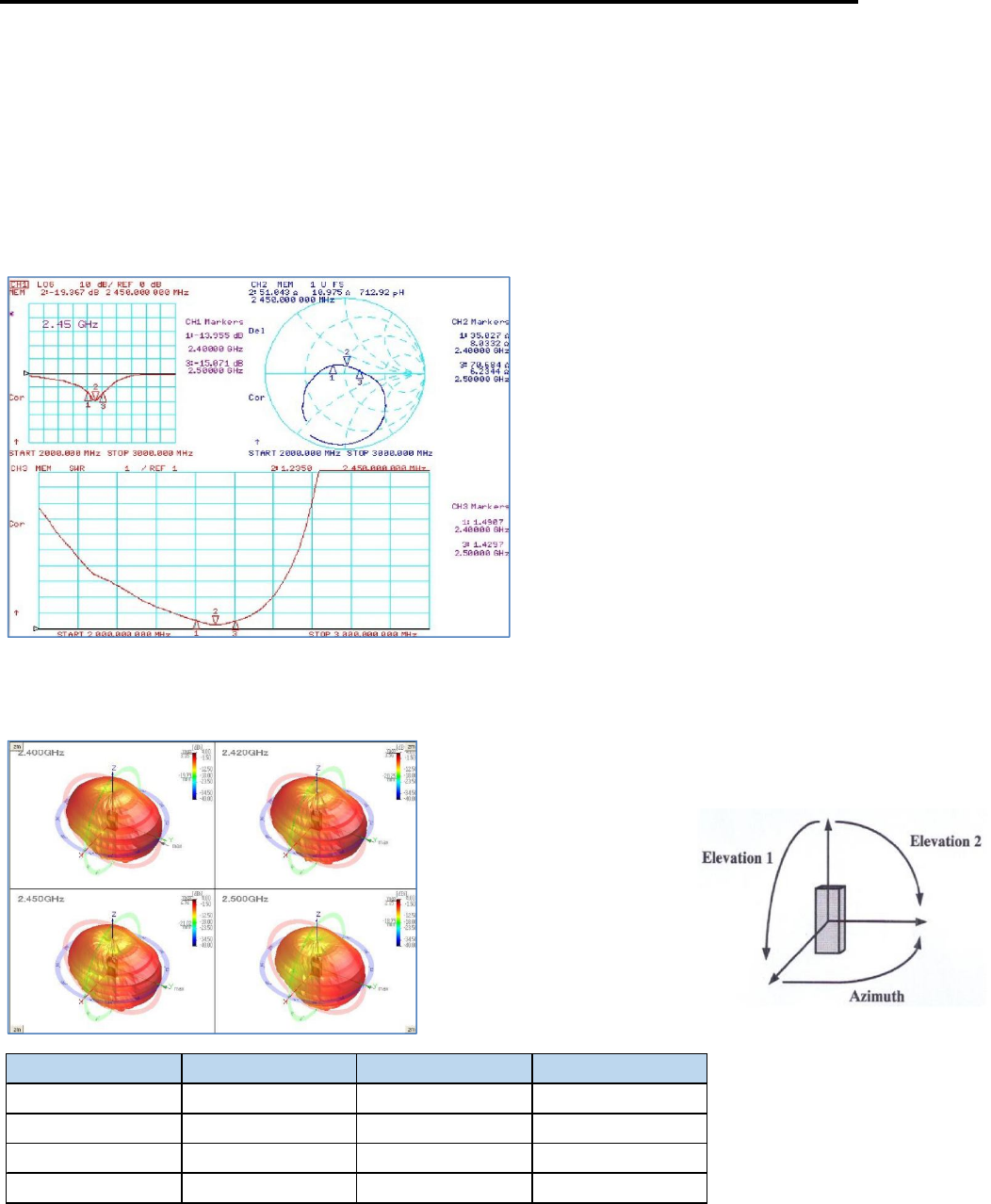
11
Freq(Mhz) Efficiency(%) Avg. Gain(dBi) Peak Gain(dBi)
2400 55.26 -2.58 3.16
2420 56.16 -2.51 3.56
2450 45.52 -3.42 2.92
2500 37.27 -4.29 2.15
2.3 Antenna Characteristics
The antenna is monopole type of chip antenna. The antenna impedance matching is optimized
for 1 mm ~ 2 mm mother board PCB thickness. The radiation pattern is impacted by the layout of
the mother board. Typically the highest gain is towards GND plane and weakest gain away from the
GND plane.
■ LOG, Smith Chart & VSWR
■ Radiation Gain

12
3. Terminal Description
3.1 UART Interface
This is a standard UART interface for communicating with other serial devices.
BT-MSOII UART interface provides a simple mechanism for communicating with other serial devices
using the RS-232 protocol.
When BT-MSOII is connected to another digital device, UART_RX and UART_TX transfer data
between the 2 devices. The remaining a signal, UART_CTS implement optional RS232 hardware flow
control
3.2 SPI Interface (Debug only)
BT-MSOII provides a debug SPI interface for programming, configuring and debugging the BT-MSOII.
Access to this interface is required in production. Ensure the 4 SPI signals externally.
3.3 I2C Interface
BT-MSOII supports a firmware controlled I²C interface to communicate with external Device.
The I²C timing is compliant with the Philips I²C Specification (100 kHz and 400 kHz).

13
4. Reset, RST#
BT-MSOII is reset from several sources:
▪ RST# pin
▪ Power-on reset
▪ UART break character
The RST# pin is an active low reset and is internally filtered using the internal low
frequency clock oscillator. CSR recommends applying RST# for a period >5ms.

14
■ Notice
This device complies with Part 15 of the FCC Rules. Operation is subject to the
following two conditions:
(1) This device may not cause harmful interference, and
(2) This device must accept any interference received, including interference
that may cause undesired operation.
This device complies with Industry Canada’s licence-exempt RSSs. Operation is
subject to the following two conditions:
(1) This device may not cause interference; and
(2) This device must accept any interference, including interference that may
cause undesired operation of the device
Le présent appareil est conforme aux CNR d'Industrie Canada applicables aux
appareils radio exempts de licence. L'exploitation est autorisée aux deux
conditions suivantes :
(1) l'appareil ne doit pas produire de brouillage, et
(2) l'utilisateur de l'appareil doit accepter tout brouillage radioélectrique subi,
même si le brouillage est susceptible d'en compromettre le fonctionnement.
The module is limited to OEM installation ONLY.
OEM integrators are responsible for ensuring that the end-user has no manual
instructions to remove or install module.
The module is limited to installation in mobile or fixed applications, according to
Part 2.1091(b).
Separate approval is required for all other operating configurations, including
portable configurations with respect to Part 2.1093 and different antenna
configurations.
For a host manufacture’s using a certified modular, if (1) the module’s FCC ID is
not visible when installed in the host, or (2) if the host is marketed so that end
users do not have straightforward commonly used methods for access to remove
the module so that the FCC ID of the module is visible; then an additional
permanent label referring to the enclosed module: “Contains Transmitter
Module FCC ID: 2AKMF-BT-MSOII” or “Contains FCC ID: 2AKMF-BT-MSOII”
must be used. The host OEM user manual must also contain clear instructions on
how end users can find and/or access the module and the FCC ID.
Canada certification label of a module shall be clearly visible at all times when
installed in the host product; otherwise, the host product must be labelled to
display the Canada certification number for the module, preceded by the word
“Contains” or similar wording expressing the same meaning, as follows:
Contains IC : 22266-BTMSOII
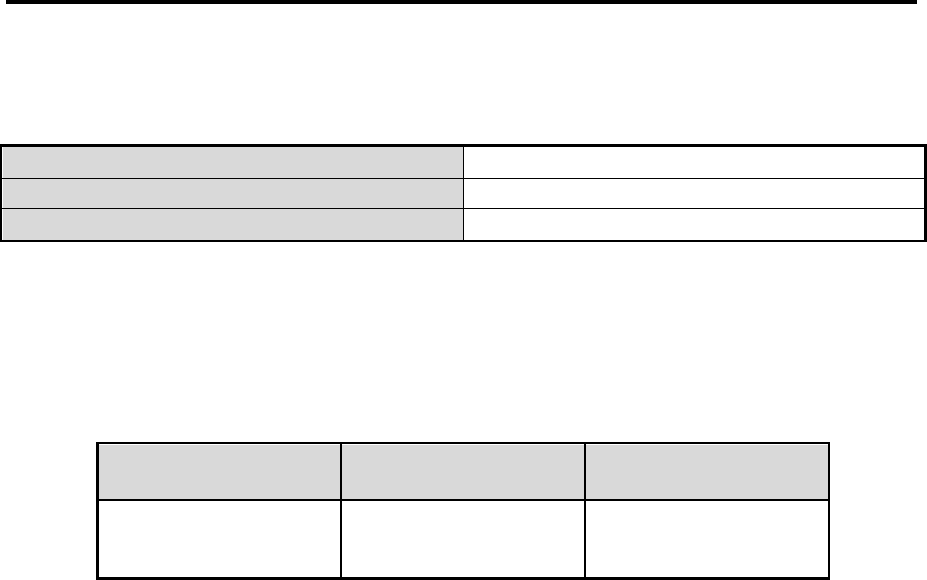
15
■ Product Information
Model Number BT-MSOII
Product Name Bluetooth Module
Firmware Version 2.0.0
■ Antenna
The MT-MSOII Module has been designed to operate with the following antenna and gains. Use
with other antenna types or with these antenna types at higher gains is strictly prohibited.
Type of Antenna Gain (dBi) Type of Connector
Chip Antenna 3.56
Permanent
integral
■ Warning - U.S.A
i) Changes or modifications not expressly approved by the manufacturer could
void the user's authority to operate the equipment.
ii) Caution: Exposure to Radio Frequency Radiation.
To comply with FCC RF exposure compliance requirements, a separation distance
of at least 20 cm must be maintained between the antenna of this device and all
persons.
Afin de se conformer aux exigences en matière d'exposition aux
rayonnements radioélectriques, une distance de séparation d'au moins 20 cm
doit être maintenue entre l'antenne de cet appareil et toutes les personnes.